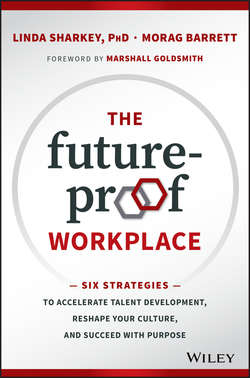Читать книгу The Future-Proof Workplace - Goldsmith Marshall - Страница 10
На сайте Литреса книга снята с продажи.
CHAPTER 1
SURVIVING AND THRIVING IN TURBULENCE
Changing Demographics
ОглавлениеMuch is written today about the millennial generation. And much of it is derisive: “Millennials don't want to work hard. They want to be immediately rewarded with big jobs.”
Go back 30 or 40 years and read books and articles about the young people coming into the workforce, and you'll see the same criticisms and concerns. In fact, the same themes were a part of social commentary 1,000 years ago.
Yes, millennials are different, but every new generation has challenged conventional ways of doing things. And there is one constant: the entry-level generation cannot understand why they are not getting the big jobs in three years. And they have much to say about how things should be done.
Millennials have more sophisticated information tools and are usually more adept at using them in the workplace. In other words, most have the data and social skills to back up their assertions.
Children today know more because they can discover information much more quickly – and with the right environment, they can use that information to create exciting products and services. Today's 5-year-olds can create items that a 12-year-old could not create 10 years ago, or adults a generation ago.
There always has been, and always will be, generations that challenge the status quo with more knowledge and creative capability than their predecessors. But the new dynamic is how different generations must coexist in larger numbers in the workplace.
Increased health and longevity has a huge impact on the workforce. For many, retirement at the end of a career no longer makes sense, but sabbaticals during careers may.
In the past, people retired at age 65, expecting a lifespan of about 10 more years. Today, many young people can expect to be active and productive for 20 or 30 years past age 65. The 100-year life will be a reality for many. The trend also means there will be many generations at work. This is the first time in history that five generations are in the workplace together.
